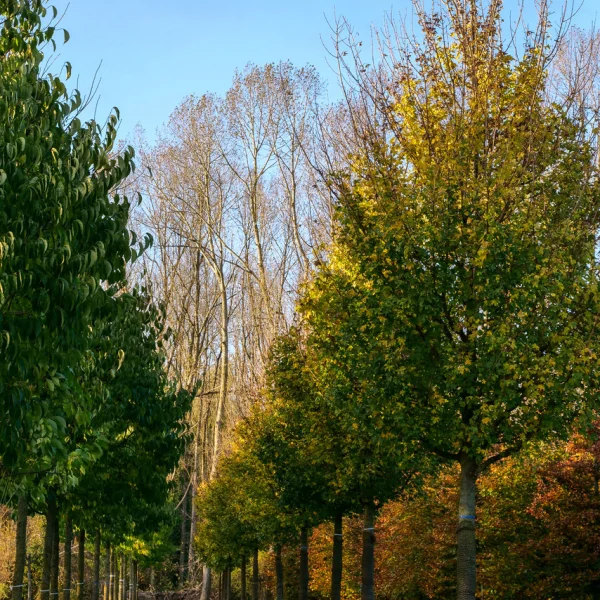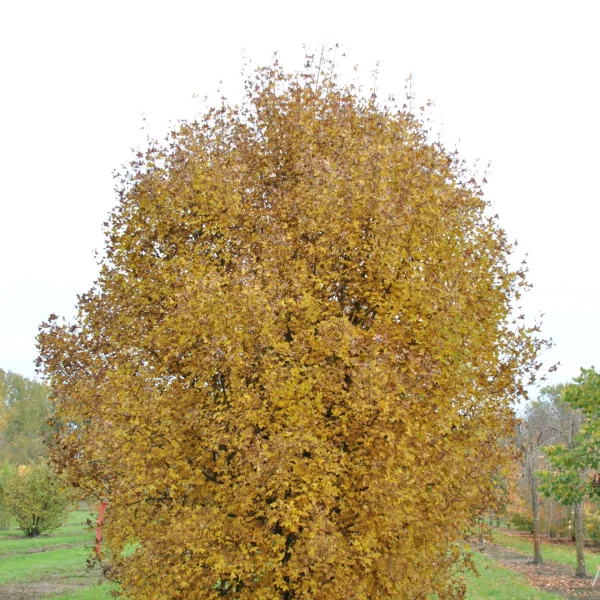Acer opalus – Acer opalus
Sapindaceae
Acer opalus – Acer opalus
Acer opalus (arțar italian) crește de la o formă de arbust la un arbore de dimensiuni medii, cu o coroană ovoidală până la ovoidală. Crengile, scoarța și frunzele sale nu sunt deosebit de spectaculoase. Frunzele acestui arțar italian au o formă destul de variabilă; numărul de lobi variază de la 3 la 7. Vârfurile lobilor sunt ascuțite sau rotunjite. Fața superioară a frunzei este glabră, iar fața inferioară este inițial complet păroasă, ulterior doar pe nervurile principale. Tulpinile florale sunt, de asemenea, păroase, ceea ce reprezintă o caracteristică distinctivă a Acer opalus. Culorile de toamnă pot fi de la roșu până la roșu-maroniu intens, dar depind foarte mult de locație și de climatul local. Cele două fructe înaripate formează un unghi drept spre acut unul față de celălalt.
Availability
Specifications
Download PDF
Height
10 - 15 m
Width
5-10m
Crown
ovoid / egg-shaped
Bark and branches
branches brown brown, bark brown, later flaking off in plates
Leaf
palmately lobed, 3-5 (7) lobes, 16-20 cm, mat green
Autumn colour
yellow, orange, red
Flowers
greenish yellow, with hairy pedicels, end of March
Fruits
single-seed, winged nutlets, always paired
Spines/thorns
None
Toxicity
usually not toxic to people, (large) pets and livestock
Soil type
preferably on calcareous, not in wet soils, well-drained
Paving
tolerates no paving
Winter hardiness zone
6 (-23,3 to -17,8 °C)
Wind resistance
fairly
Other resistances
resistant to frost (WH 1 - 6)
Fauna tree
aluable for bees (honey plant), valuable for butterflies
Shape
clearstem tree, multi-stem treem
Origin
Central and Southern Europe and Northwest Africa (Algeria and Morocco)
Possibly of interest
Frequently asked questions
Acer opalus
Acer opalus can eventually reach a height of 10 - 15 m, depending on the site and climate conditions.
Acer opalus has a average growing and can eventually reach a height of 10 - 15 m, depending on the site and climate conditions.
The leaves of Acer opalus turn yellow, orange, red in autumn.
The right time to plant Acer opalus is during the dormancy period. In Western Europe, Acer opalus with root balls can generally be planted from mid-November to late April, although this depends strongly on the climatic conditions and the species of tree.
march.
General
 English
English
 English (United Kingdom)
English (United Kingdom)
 Nederlands
Nederlands
 Nederlands (België)
Nederlands (België)
 Deutsch
Deutsch
 français
français
 čeština
čeština
 polski
polski
 español
español
 română
română
 dansk
dansk
 svenska
svenska
 magyar
magyar
 Türkçe
Türkçe
 slovenčina
slovenčina
 русский
русский
 norsk
norsk








